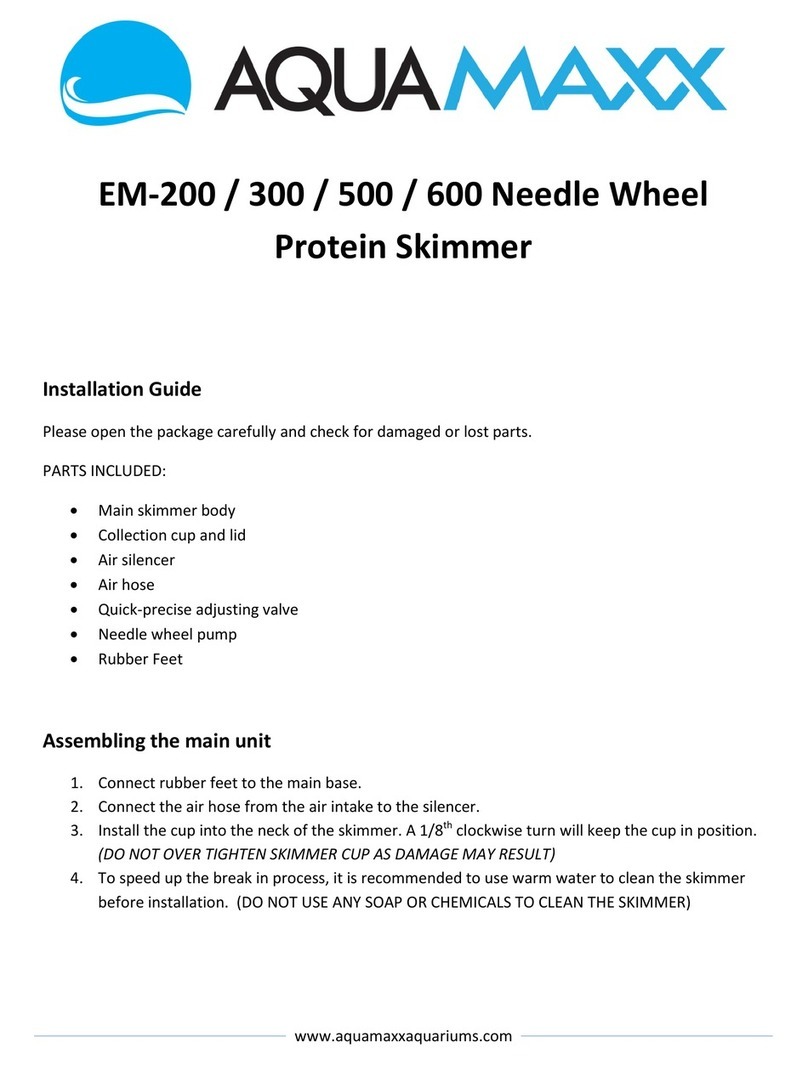
1Open the flow control valve,turn on the feeding pump.
2Turn on the reactor pump on for 20-30 minutes or until the water inside the chamber runs clear.
Take this opportunity to check for leaks.
3After several minutes, check to see if water is exiting the flow control valve and flowing back to the sump.
Once water is flowing back to the sump, adjust the flow control valve until the drip rate is approximately 2-3 drops per second.
4
5
After two weeks, use NO₂(nitrite) and NO₃(nitrate) test kits to check the effluent water’s NO₂(nitrite) and NO₃(nitrate)
levels. If the nitrite (NO₂) level is higher than 0 ppm, there is no need to test the nitrate (NO₃) level as the reactor is still
breaking in and the result would in incorrect. It will take 4-6 weeks for denitrifying bacteria to fully colonize the media in the
Sulfur Denitrator.
Allow the Sulfur Denitrator to run for 2 weeks then test the NO₂(nitrite) level and NO₃(nitrate) levels: both in the aquarium
and of the effluent. If the NO₂level tests to be zero and the nitrate level of the effluent is lower than the nitrate level of your
aquarium water, the Sulfur Denitrator has begun reducing nitrate (NO₃).
Now, measure the NO₃(nitrate) level with a test kit. If the NO₃(nitrate) level is higher than 0 ppm, reduce the effluent drip-rate.
If the NO₃(nitrate) level is 0 ppm, increase the water flow slightly. After this time, you can begin to tune Sulphur Reactor
by adjusting the effluent drip rate to obtain the maximum nitrate reduction rate.
*Please note: a denitrator helps to reduce nitrates. How much the denitrator is able to lower your nitrate level will depend on
the bioload, the amount of food you feed, and the size of the denitrator. While a denitrator will significantly reduce your
nitrates, it does not guarantee a zero nitrate level in your aquarium.
6
To Start Operating
flow control valve (opened) flow control valve (closed)
4

























